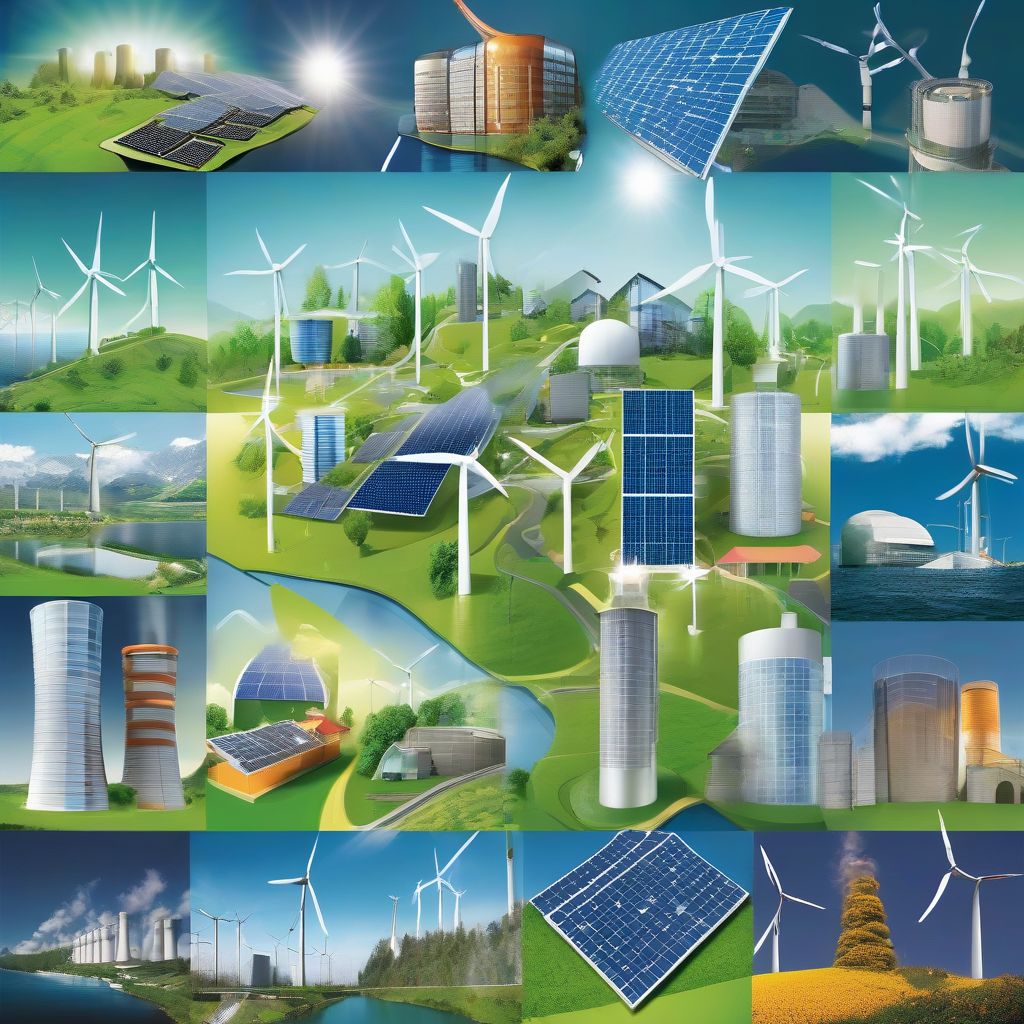Imagine a world powered by clean, sustainable energy, where the air is fresh, and the threat of climate change recedes. This isn’t a distant dream, but a rapidly approaching reality thanks to advancements in renewable energy sources. 2024 is shaping up to be a pivotal year for this transition, with several promising technologies taking center stage. Let’s delve into the most exciting developments and explore why they hold the key to a greener future.
Solar Power: Still Shining Bright
Photovoltaic (PV) Systems: Continued Growth and Innovation
Solar power remains a dominant force in the renewable energy landscape. Photovoltaic (PV) systems, which convert sunlight directly into electricity, continue to experience rapid growth. Efficiency improvements and falling costs are driving widespread adoption, from large-scale solar farms to rooftop installations. Innovation in PV technology, including bifacial solar panels that capture light from both sides, is further enhancing energy output.
Concentrated Solar Power (CSP): Harnessing the Sun’s Heat
Concentrated solar power (CSP) is another promising area of solar energy. CSP systems use mirrors to focus sunlight onto a receiver, generating intense heat to drive a turbine and produce electricity. These systems offer the advantage of thermal storage, allowing them to dispatch power even when the sun isn’t shining, addressing the intermittency challenges often associated with solar energy.
Wind Energy: Catching the Breeze
Onshore Wind: A Mature and Reliable Source
Onshore wind energy has become a cornerstone of the renewable energy sector. Advancements in turbine technology, including larger rotor diameters and improved blade designs, are maximizing energy capture. Wind farms are increasingly integrated into existing power grids, providing a reliable source of clean electricity.
Offshore Wind: Tapping into Untapped Potential
Offshore wind energy holds immense potential, particularly in coastal regions with strong and consistent winds. While offshore wind farms require significant investment, they can generate vast amounts of electricity due to the higher wind speeds available at sea. Floating offshore wind turbines, a relatively new technology, open up possibilities for deeper water installations, further expanding the reach of this resource.
Hydropower: The Power of Water
Conventional Hydropower: A Proven Technology
Hydropower, harnessing the energy of moving water, has been a significant source of renewable electricity for decades. Large dams and reservoirs provide a reliable and dispatchable power source, offering grid stability and flexibility.
Pumped Hydro Storage: Balancing the Grid
Pumped hydro storage is a valuable technology for balancing intermittent renewable energy sources like solar and wind. These systems use excess electricity to pump water uphill to a reservoir, then release it downhill through turbines to generate electricity when demand is high, effectively storing energy for later use.
Geothermal Energy: Harnessing the Earth’s Heat
Geothermal energy taps into the Earth’s internal heat to produce electricity and provide direct heating and cooling. Geothermal power plants are highly reliable and can operate continuously, providing a stable baseload power source. Advancements in enhanced geothermal systems (EGS) are expanding the geographic reach of geothermal energy, making it accessible in more locations.
Bioenergy: Sustainable Fuels from Biomass
Bioenergy utilizes organic matter, or biomass, to produce fuels and electricity. Sustainable bioenergy sources, such as agricultural residues and dedicated energy crops, offer a carbon-neutral alternative to fossil fuels. Biofuels can be used in transportation, while biomass power plants generate electricity.
The Future of Renewable Energy: A Collaborative Approach
The future of renewable energy lies in a collaborative approach, integrating different technologies to create a robust and resilient energy system. Hybrid systems, combining solar and wind power with energy storage solutions, are gaining traction. Smart grids and advanced energy management systems are essential for optimizing the use of renewable energy and ensuring grid stability. The continued growth and innovation in these promising renewable energy sources pave the way for a cleaner, more sustainable future for generations to come.
 Renewable Energy Sources in 2024
Renewable Energy Sources in 2024
Conclusion
We’ve explored the most promising renewable energy sources poised to shape the energy landscape in 2024 and beyond. From solar and wind to hydropower, geothermal, and bioenergy, each technology offers unique advantages and contributes to a more sustainable future. Continued innovation and investment in these areas are crucial for mitigating climate change and ensuring a clean energy future for all. What are your thoughts on the future of renewable energy? Share your insights and perspectives in the comments below, and let’s continue the conversation. Explore further by visiting our resources page for more in-depth information on each of these exciting technologies.



